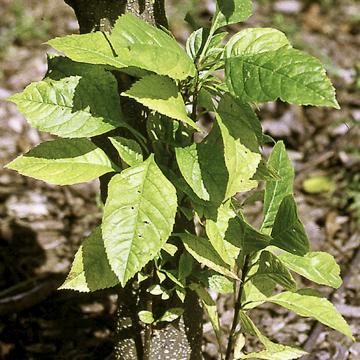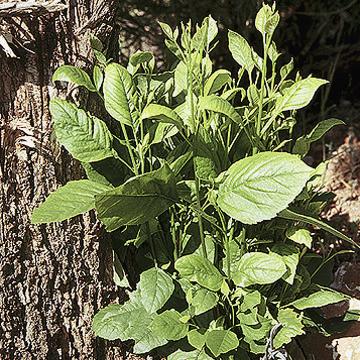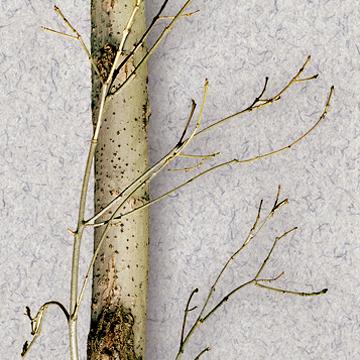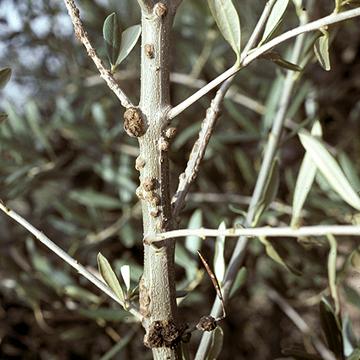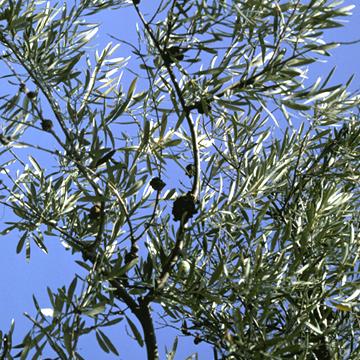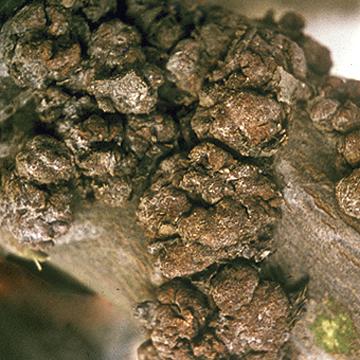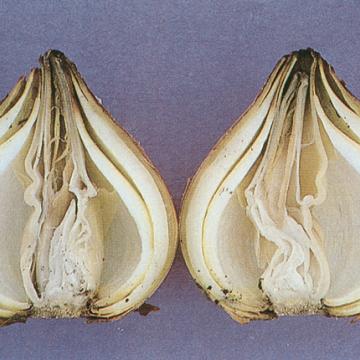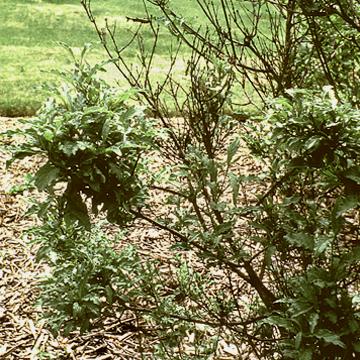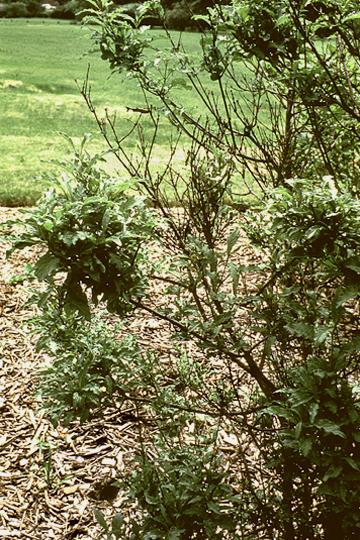DISEASE: Ash yellows
HOST: Ash
Ash sapling with basal sprouts and chlorotic leaves.

Ash yellows | Ash
DISEASE: Ash yellows
HOST: Ash (Fraxinus pennsylvanica)
PATHOGEN: 'Candidatus Phytoplasma fraxini'
PATHOGEN SYNONYM: Phytoplasma Ash yellows group
SOURCE: W. Sinclair
DISEASE: Ash yellows
HOST: Ash
Witches'-broom at base of declining tree.
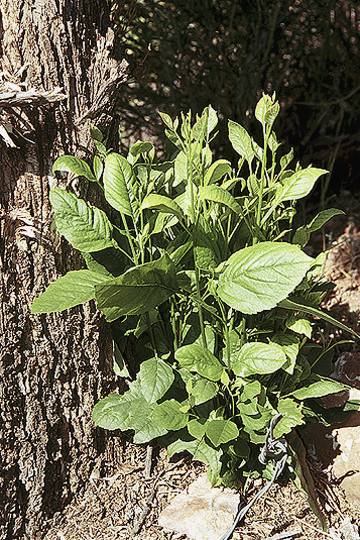
Ash yellows | Ash
DISEASE: Ash yellows
HOST: Ash (Fraxinus velutina)
PATHOGEN: 'Candidatus Phytoplasma fraxini'
PATHOGEN SYNONYM: Phytoplasma Ash yellows group
SOURCE: W. Sinclair
DISEASE: Ash yellows
HOST: Ash
Forest of declining trees, some chlorotic and others with dieback.
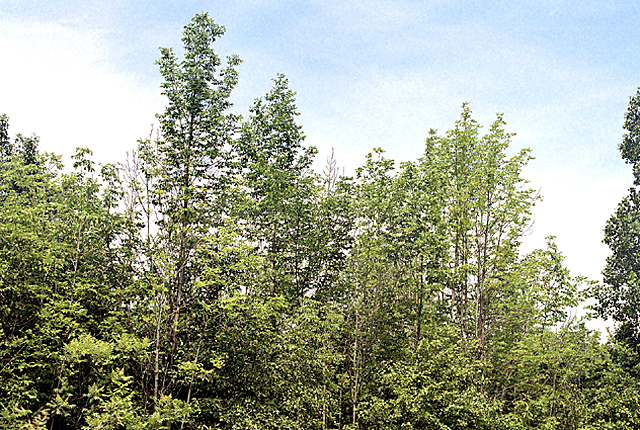
Ash yellows | Ash
DISEASE: Ash yellows
HOST: Ash (Fraxinus americana)
PATHOGEN: 'Candidatus Phytoplasma fraxini'
PATHOGEN SYNONYM: Phytoplasma Ash yellows group
SOURCE: W. Sinclair
DISEASE: Ash yellows
HOST: Ash
White ash with deliquescent branching.
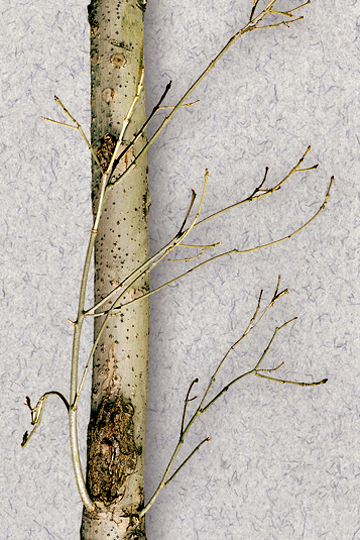
Ash yellows | Ash
DISEASE: Ash yellows
HOST: Ash (Fraxinus americana)
PATHOGEN: 'Candidatus Phytoplasma fraxini'
PATHOGEN SYNONYM: Phytoplasma Ash yellows group
SOURCE: W. Sinclair
DISEASE: Olive knot
HOST: Olive
Multiple infections of young stems. The bacterium invades vascular tissues during certain times of the year and may be isolated from branches that appear healthy.
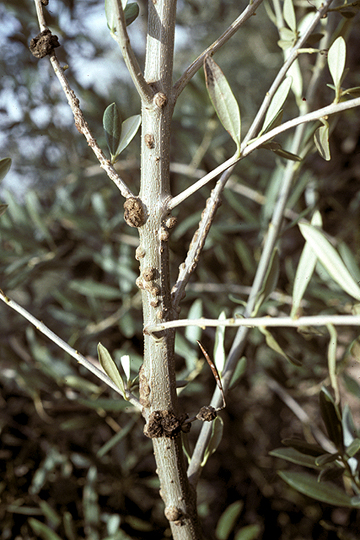
Olive knot | Olive
DISEASE: Olive knot
HOST: Olive (Olea europaea)
PATHOGEN: Pseudomonas savastanoi pv. savastanoi
SOURCE: M. Schroth
DISEASE: Olive knot
HOST: Olive
Tree with knots/galls on branches along with twig dieback, which is associated with knots. Fusarium and Diplodia spp. infect through knots and are thought to be main reason for dieback.
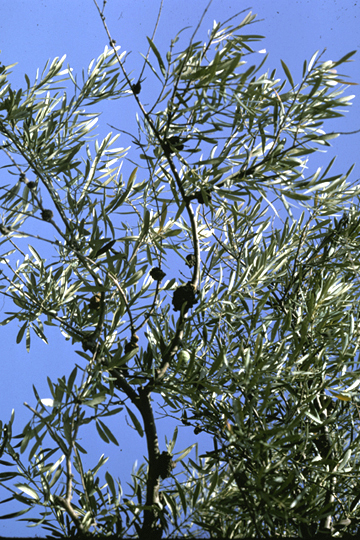
Olive knot | Olive
DISEASE: Olive knot
HOST: Olive (Olea europaea)
PATHOGEN: Pseudomonas savastanoi pv. savastanoi
SOURCE: M. Schroth
DISEASE: Olive knot
HOST: Olive
Multiple infections on olive branch. Knots at this stage begin to die from the outside in and are infected by several fungi.

Olive knot | Olive
DISEASE: Olive knot
HOST: Olive (Olea europaea)
PATHOGEN: Pseudomonas savastanoi pv. savastanoi
SOURCE: M. Schroth
DISEASE: Slippery skin
HOST: Onion
Rot progresses from the top of infected scales and eventually internal tissues rot. In early stages, the only external symptoms may be softening of the neck.
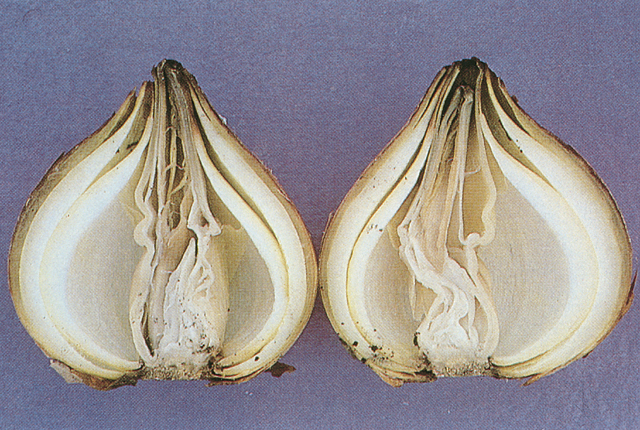
Slippery skin | Onion
DISEASE: Slippery skin
HOST: Onion (Allium cepa)
PATHOGEN: Burkholderia gladioli pv. alliicola
PATHOGEN SYNONYM: Pseudomonas gladioli pv. alliicola
SOURCE: H. Schwartz


